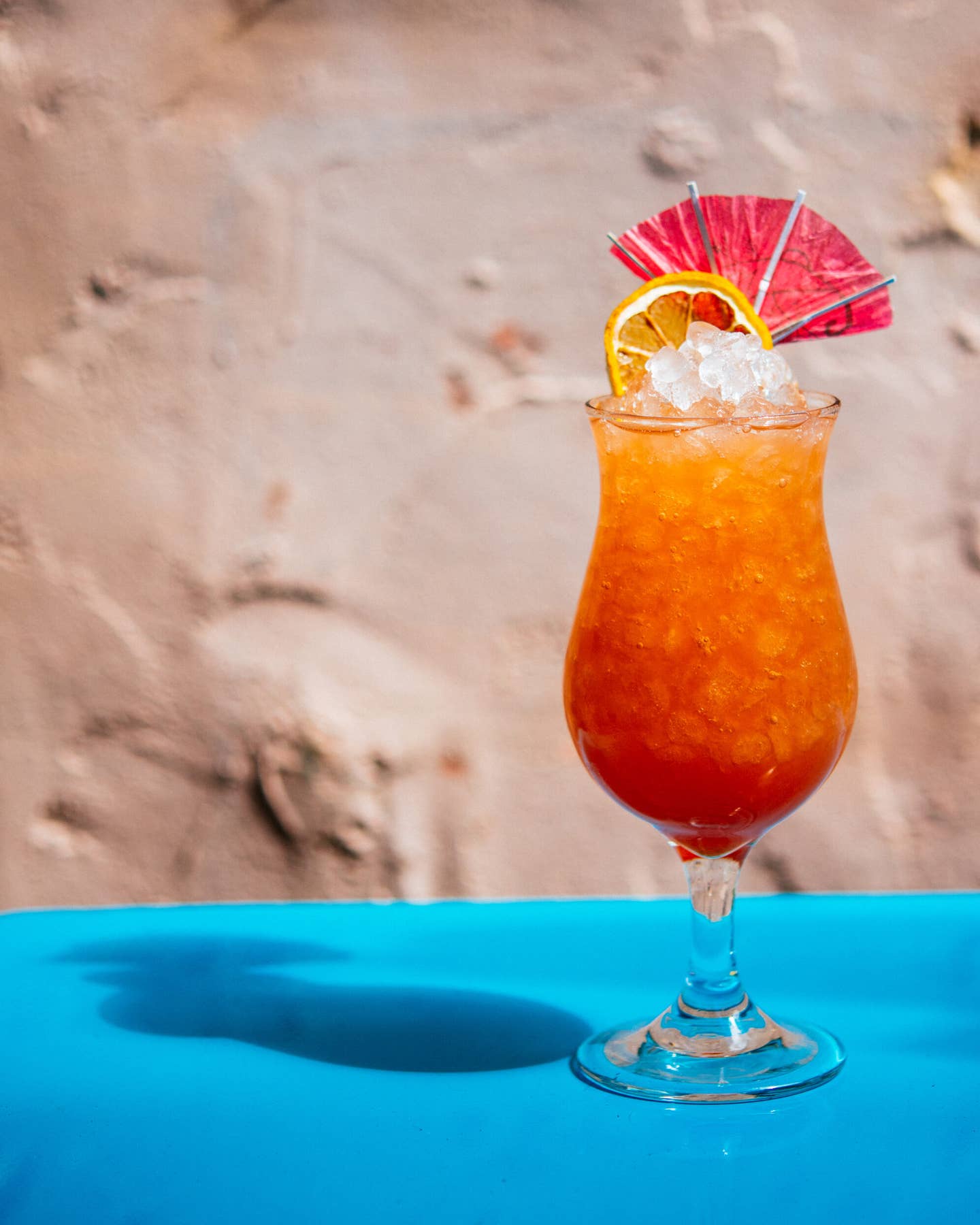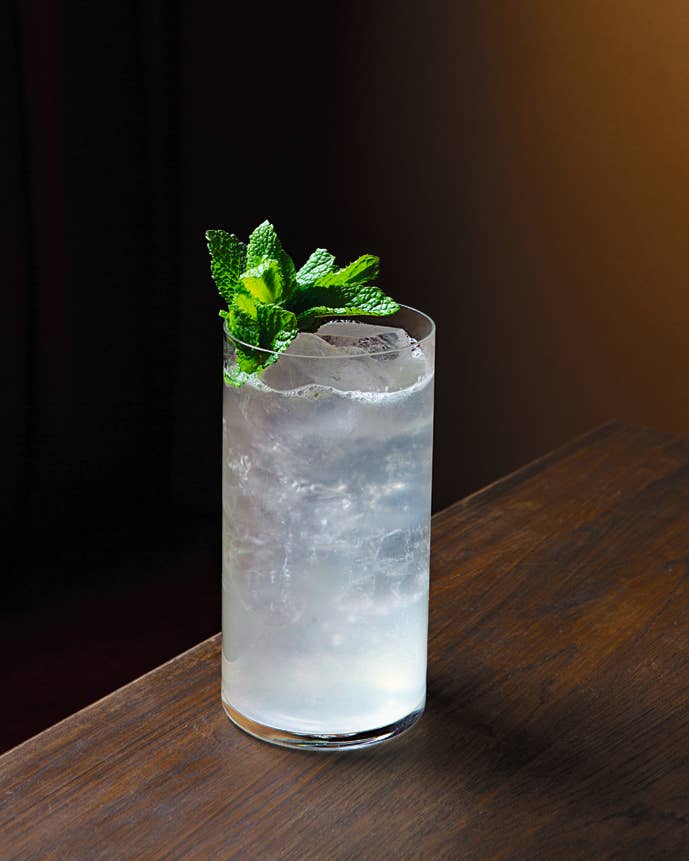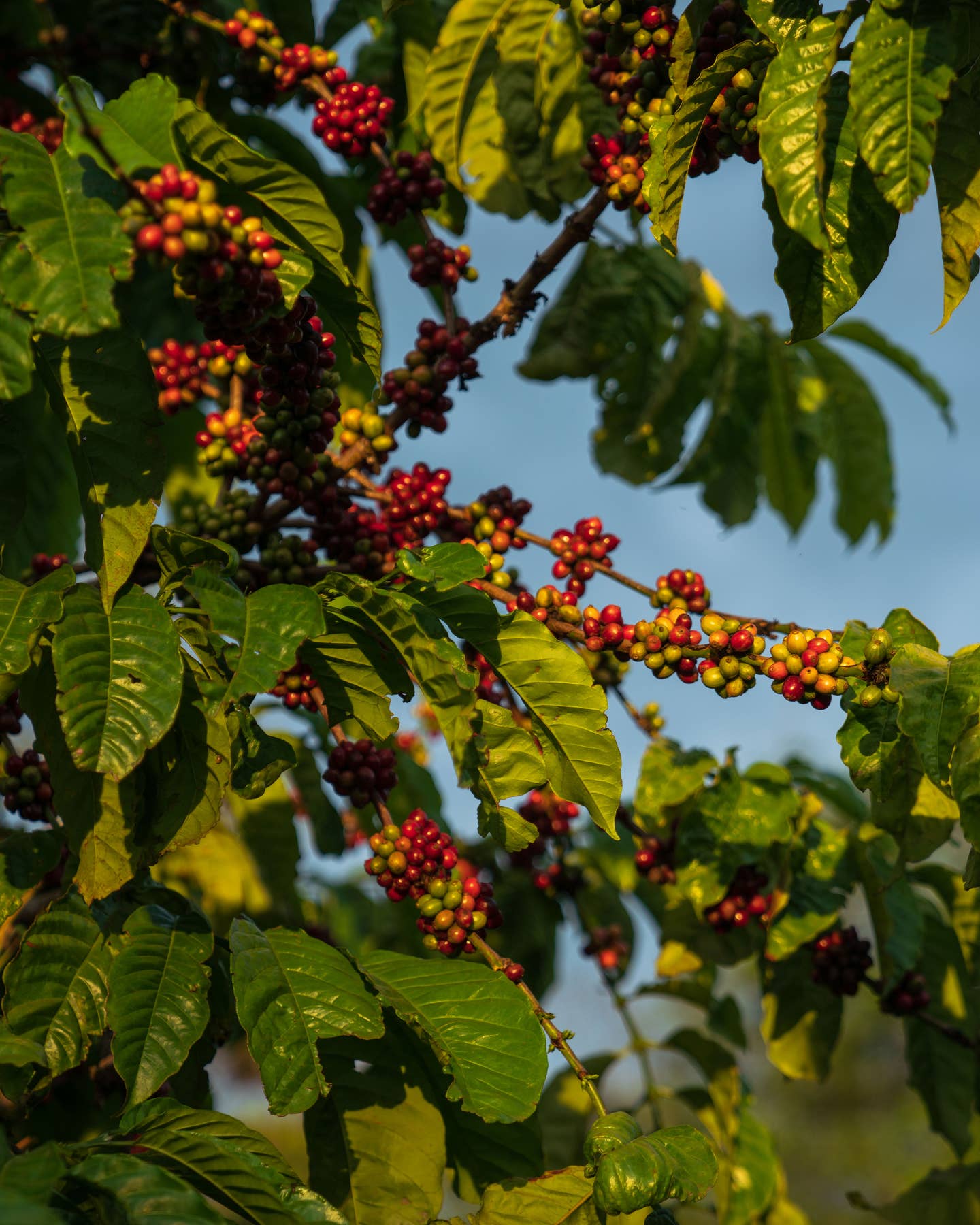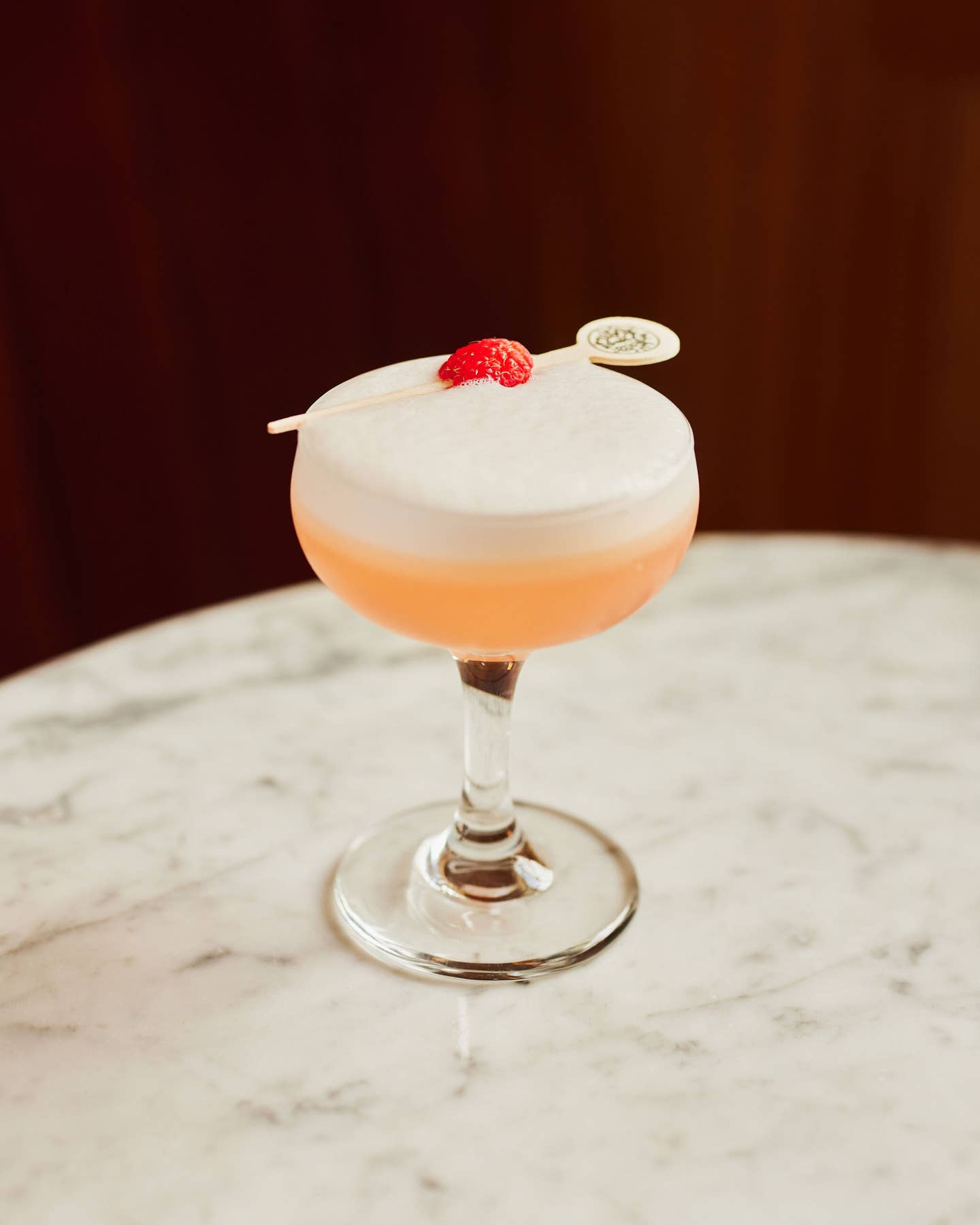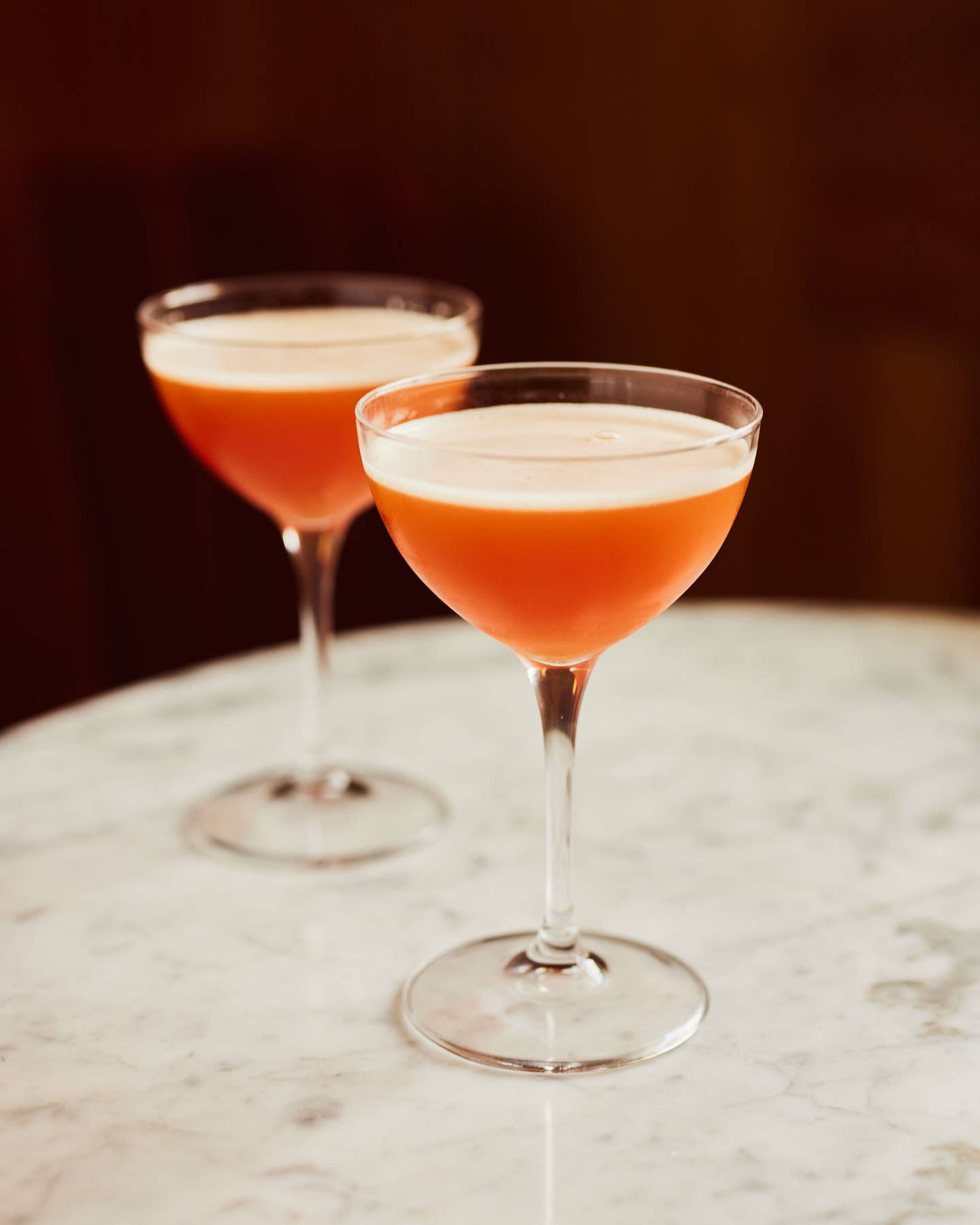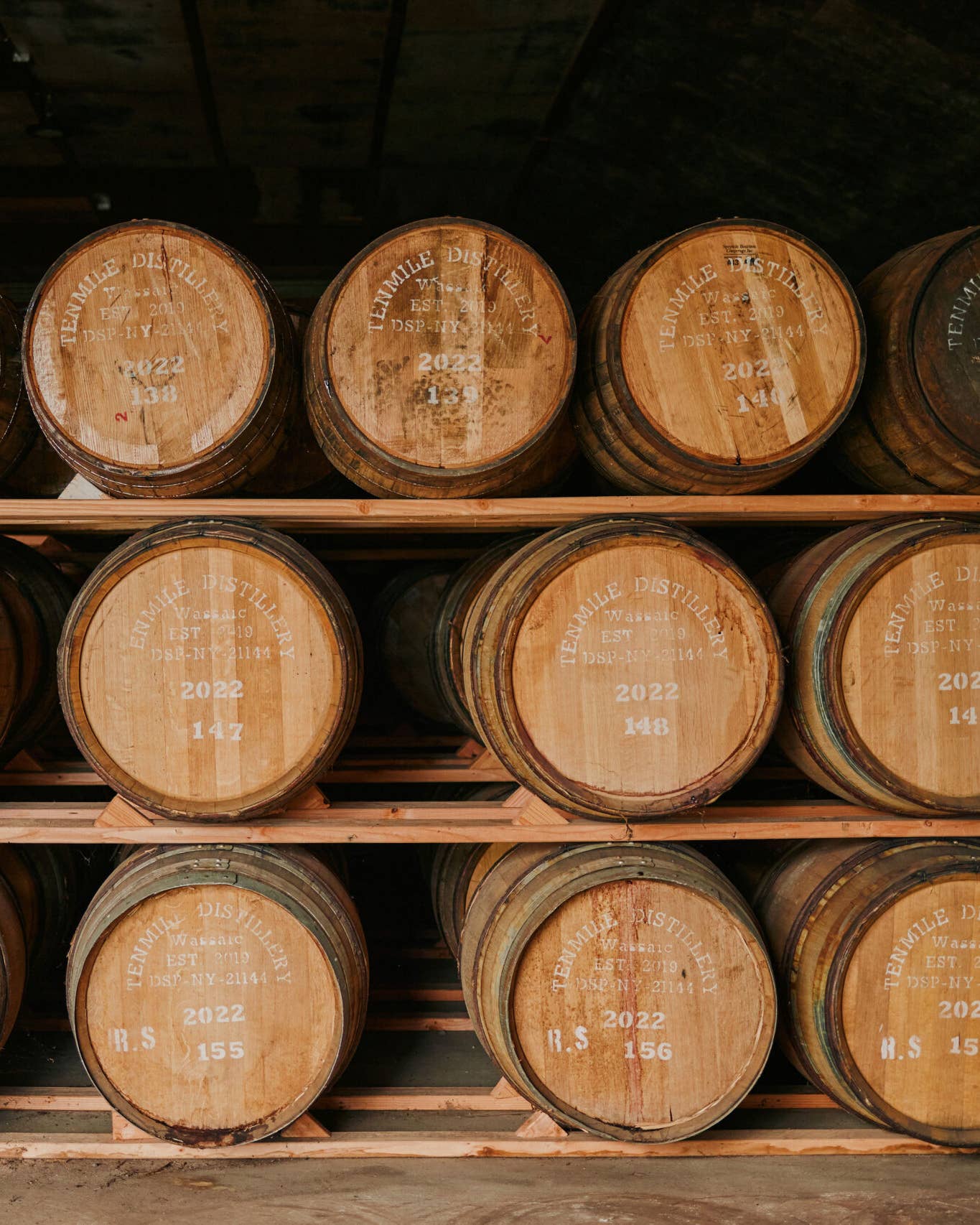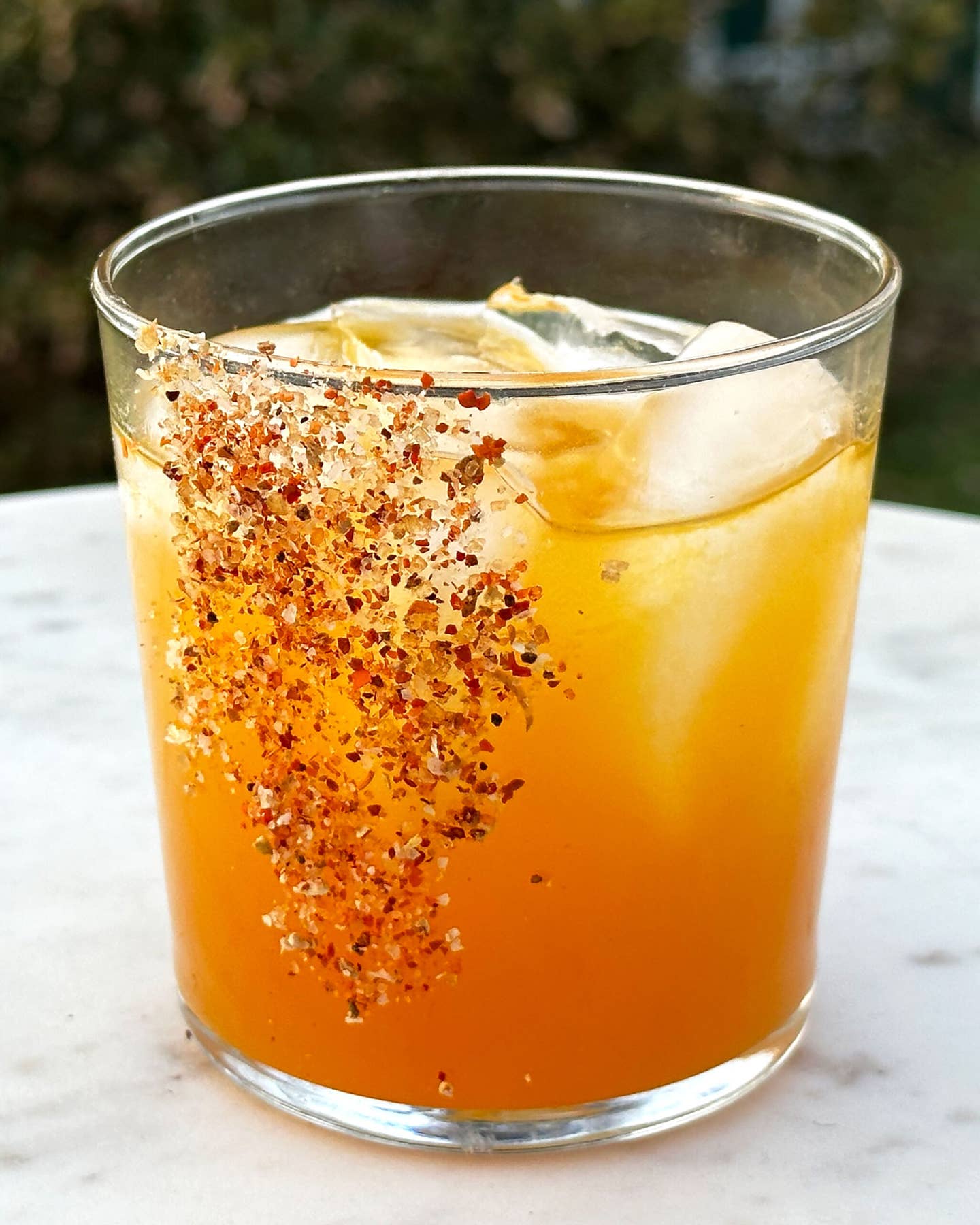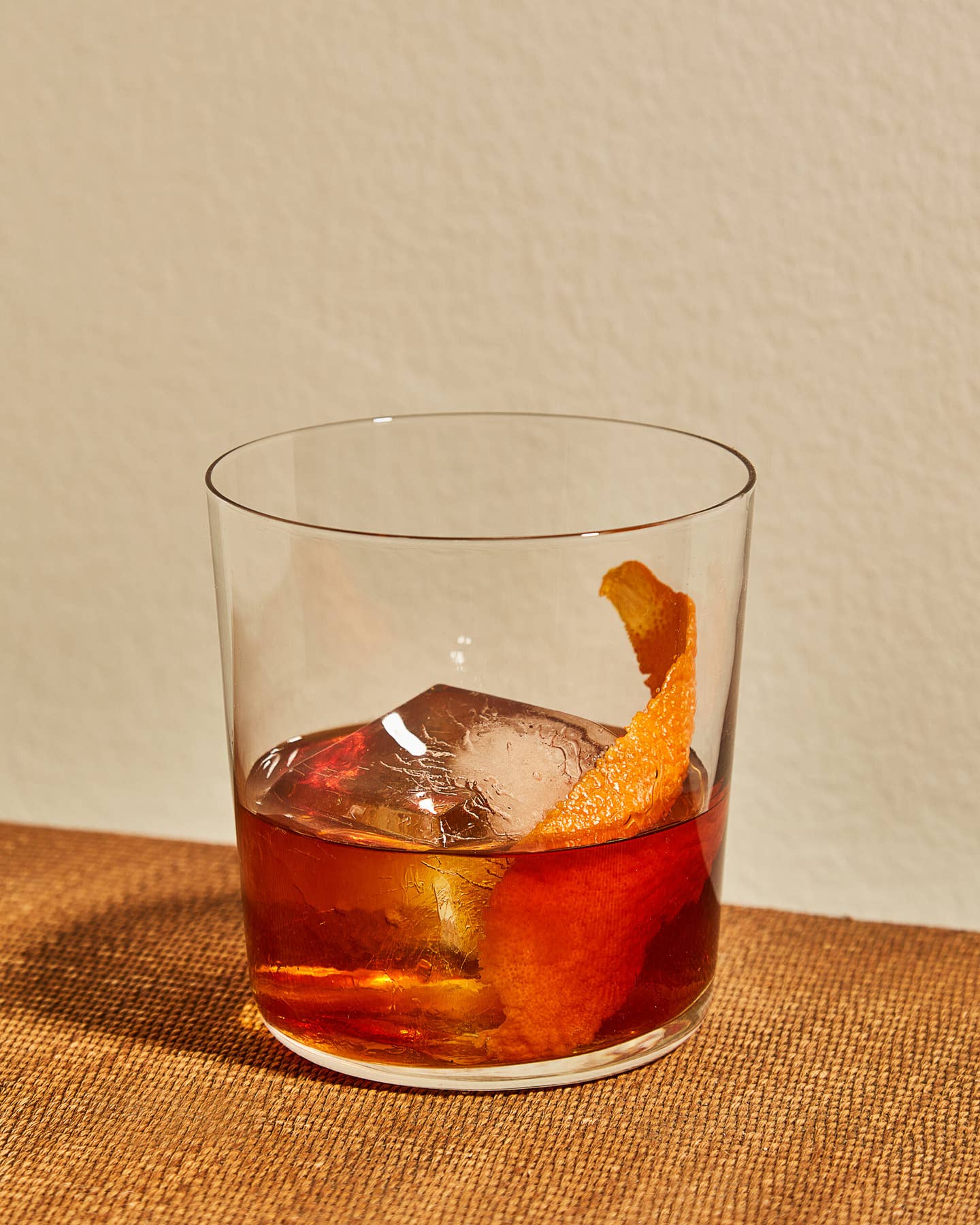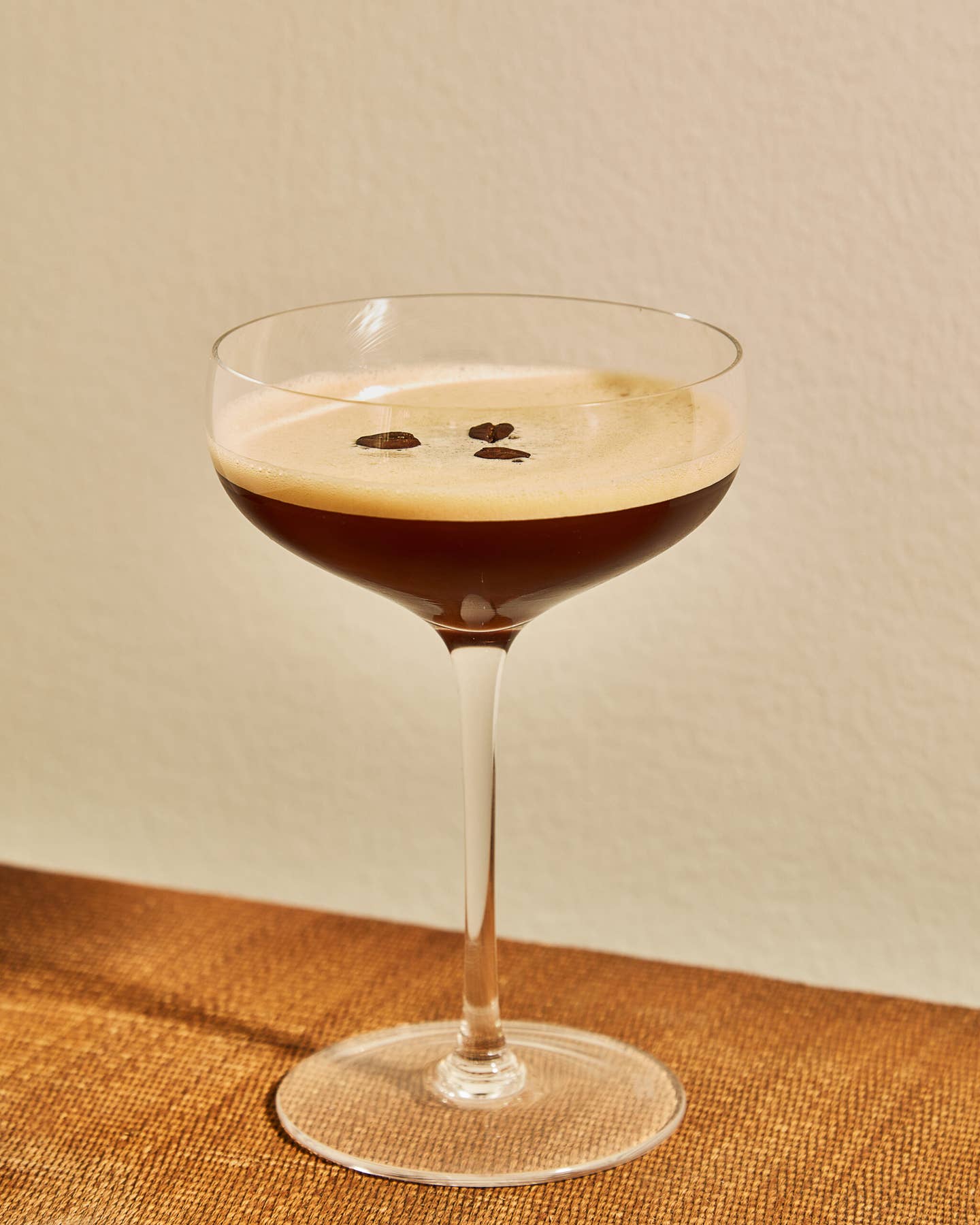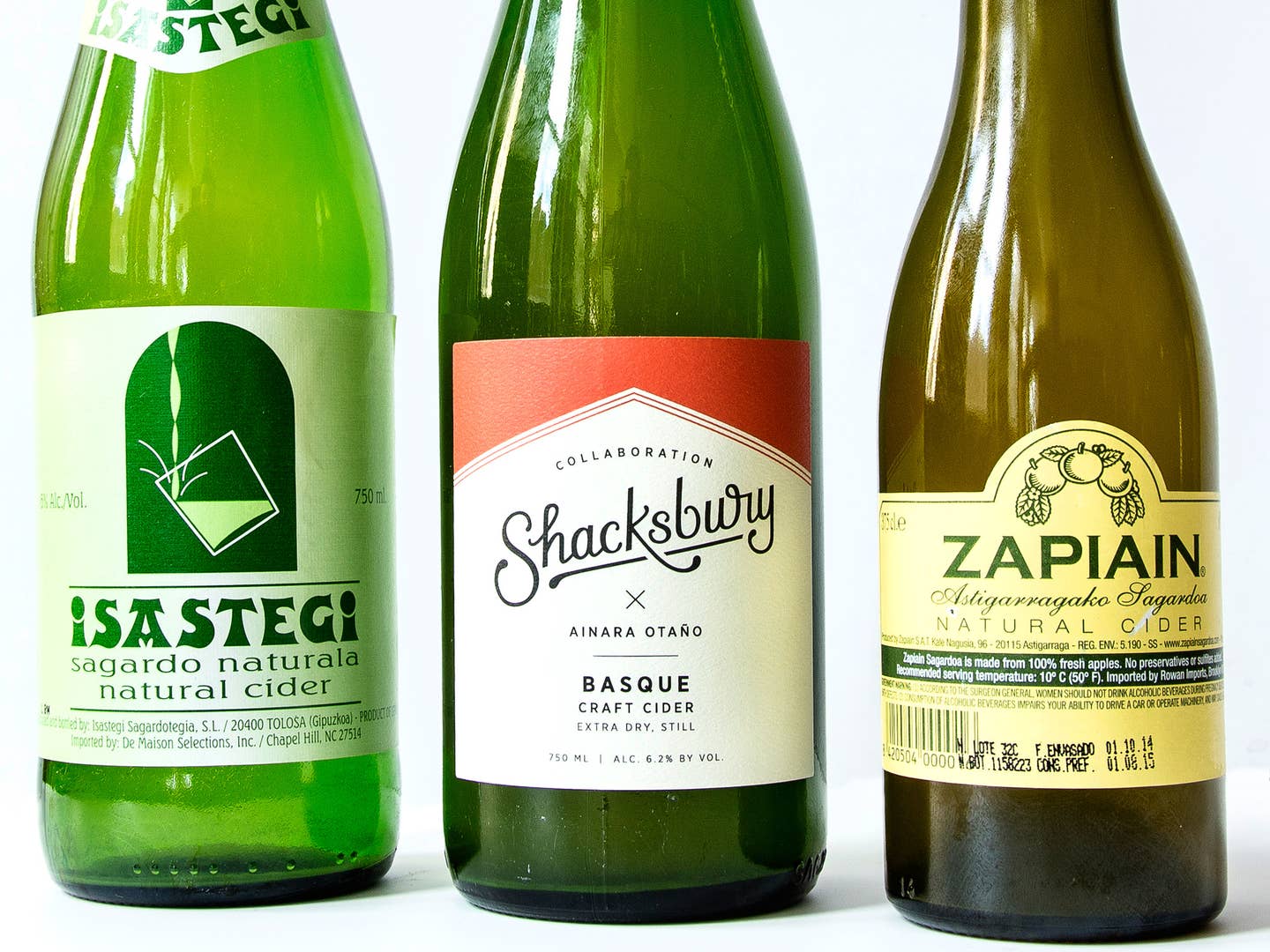
Three Basque Ciders to Drink Right Now
Funky, acidic Basque cider is catching on stateside. Here are three to try
In Northern Spain's Basque Country, the process of naturally fermenting apples into low-alcohol cider is a centuries-old tradition. But in the United States, people have only just begun catching on to the versatility of its acerbic, complex flavors. Unlike the sweeter hard cider that Americans are more familiar with, cider from the Basque region and its neighbor Asturia is unfiltered and considerably more acidic. The fermentation process occurs naturally due to the native yeast that is already present on the skins of apples. Nothing is added—no sweeteners, no additional yeast. The effect is a layer of funk on the first sip, and a finish that is both bone-dry and tart. It is a beverage that begs to be paired with food.
Chefs and beverage directors agree, and that's why more and more drink lists across the United States are starting to include a Basque cider or two. Leading the charge is Txikito, the acclaimed Basque restaurant in Chelsea from chefs and owners Alex Raij and Eder Montero. On a recent Sunday evening in early spring, Raij and Montero transformed Txikito into a pop-up sagardotegi, the cider houses unique to the Spanish Basque country. Since the 11th century when Basque cider makers first began fermenting apples into potent beverages, sagardotegiak have sat at the core of Basque culture. Every year from January to May, Basque cider houses fling open their doors, inviting guests to savor the first ciders of the season, to eat, sing, and make music together as a unified, thirst-quenched community. Central to this merriment is the txotx (pronounced "choke"), the centuries-old Basque cider house ritual of tapping a new barrel of cider. Once the tap is released, sending cider streaming out of the barrel like a fountain, drinkers rush to thrust their cups under the tap before any cider can hit the ground. The ritual feels sacred.
The sharp beverage that spewed from Txikito’s barrel on that Sunday evening was Shacksbury Cider’s 2014 vintage of The Basque, an unfiltered extra dry cider made from a blend of 30 apples native to Northern Spain. Owners David Dolginow and Colin Davis are working hard to expose the American palate to Basque cider. For The Basque, the apples are pressed and then fermented for three to four months before being shipped to Vermont, where the cidery is located. The resulting flavor, perfectly brisk and dry, is meant to surprise, Dolginow said. “We wanted to come out right out of the gate to show what the apple is capable of doing—without any flavoring or additives,” he said.
Huertas, a temple to the Basque culinary scene in New York City's East Village, has skillfully translated the Basque pintxos bar experience for an American audience. Chef and co-owner Jonah Miller was inspired to open the restaurant (the name means orchards in Spanish) after studying abroad in Spain during college. Upon returning to New York he was disappointed by the dearth of Northern Spanish cuisine and decided to roll up his sleeves and recreate those food experiences, as well as Basque beverage culture, which he found to be even less represented. Miller's business partner Nate Adler, who serves as beverage manager and co-owner of Huertas, drank his way through the coastal city of San Sebastian before putting together the drink menu, which includes the The Basque from Shacksbury as well as other Basque ciders Isastegi and Zapiain. The refreshingly dry Isastegi has already secured somewhat of a following, and the lesser known Zapiain is coming up the ranks due to its earthy sour notes. "Basque cider is so unique," says Adler. "If you like it, you're not going to find that flavor profile in anything else in the world." Both Adler and Miller say that the number of customers who come to Huertas specifically to drink cider has spiked. "On a macro level, the palates of consumers have grown up in the past few years," Adler says. Miller agrees, adding that customers exhibit a stronger interest in acidic beverages than in the past.
The cider revolution expands beyond New York City. At Tinto in Philadelphia, Chef Jose Garces has created a dining menu comprised of traditional pintxos and entrees that showcase the flavors of Basque cuisine. The seafood-driven plates include some real delicacies: Spanish octopus with green olive aioli, diver scallops with an uni emulsion, and shrimp with chorizo and espelette chile. Tinto's Beverage director, Justin Holden, tells me that it was a "no brainer" to include cider on the menu because the drink is such an integral part of Basque culture. "Eight years ago in Philadelphia there was not a scene for cider…it used to be a completely foreign concept," he says. "Today we're seeing that people need a lot less education than they used to."
There is perhaps no stronger indication of cider's sudden relevance in American beverage culture than the sundry of cider bars popping up around the country. In San Francisco, self-described "cider house-gastropub" Upcider offers ciders from around the world including Basque favorite Istastegi. Washington D.C. will soon get its first cider bar with Anxo, a Basque restaurant, bar, and cidery opening in late 2015. Chicago eagerly awaits the opening of Northman, its first cider pub set to open this summer. And in late March, New York City welcomed Wassail, which boasts a rotating list of some 100 ciders from around the world. Wassail currently carries Isastegi as well as the 2013 Zapiain. Both can also be found at Huertas, along with the 2013 The Basque from Shacksbury Ciders. The 2014 vintage will soon join that list as well.
Huerta's Adler recommends pairing cider with food that provides a good amount of funk and fat—think oily black anchovies, chicken, and pork sausage. Acidic cider and rich food, he says, are the perfect yin and yang, each working to balance and express the other.
The appeal of Basque ciders and food is found in the reverence of raw ingredients and the simple fuss-free traditions of their production. Whether in the ancient cider houses of the Basque region or in a shimmering new bar in America, one fact remains universal: cider, like most things, tastes best when paired with good food and great company.
3 Ciders to Try Right Now:
Zapiain Sagardoa
Citrusy on the on the nose and the palate, Zapiain is sour and crisp with strong acidity on the finish. Similar to a light or medium white wine, it's an ideal pairing with fish such as branzino or cod. Available through Rowan Imports
Shacksbury 2013 The Basque
The 2013 vintage of The Basque has a slight effervescence due to the natural CO2 that occurs from the natural fermentation process. Like all Basque ciders, it is unfiltered, producing a flavor that is slighty reminiscent of wet hay. The apple flavor is very prominent. The Basque is considered softer and rounder than many other Basque ciders. Available through Shacksbury Ciders
Where to drink "The Basque"
Huertas, New York, NY
The Modern at The MoMA, New York, NY
Cull & Pistol, New York, NY
Uncle Boons, New York, NY
Isategi
Isastegi has an effervescence that's immediately apparent in the pour. There is a strong oyster-like minerality that comes through on the palate, making it an ideal pairing for shellfish. Compared to the other Basque ciders, the Isastegi contains higher acids and more pronounced tannins. Available through: De Maison Imports
Keep Reading
Continue to Next Story

